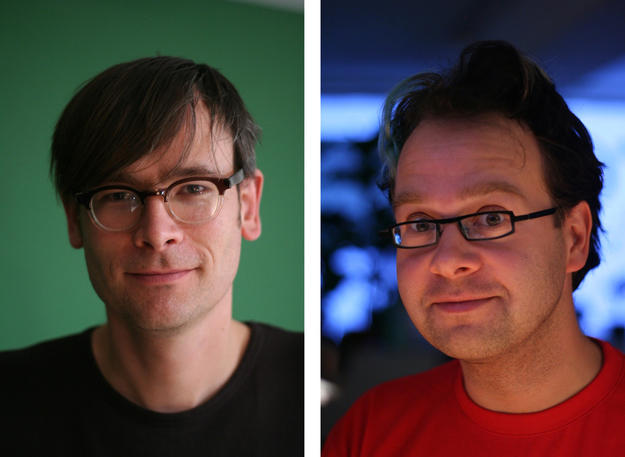Arduino is one of the projects aiming to allow designers of all trades easier access to what used to be the exclusive domain of technologists only a few years ago. Build on Processing, which successfully did the same thing (not only) for visual designers, it offers an easy programming language and a lively community to get you going. Its hardware part consists of an Atmel microcontroller with several inputs to connect all kinds of sensors to and outputs to which motors or other actuators can be attached. This setup allows for almost endless possibilities with the enormous range of sensors and other parts available. Using this or similar technology, almost every thing could sense information, be networked or equipped to have some kind of agency on the world around it. And oh, it's made in Italy.
At the Mediamatic Wearable Workshop, Massimo Banzi who is part of the core team that is developing Arduino, first gave an introduction into its design, main features, how to upload to the board etc. The first hands-on project was, of course, "how to make a LED blink". Then, for the next two days, the participants continuously worked in groups on their own self-assigned projects, supported by Massimo, several of Mediamatic's trainer-assistants and special fellow-Italian guest Ubi de Feo. While some of the participants used the workshop to make their first steps in electronics development, some already have had fairly sophisticated projects in mind. The outcome of the workshop was quite impressive, with virtually all the groups succeeding in building a working system with a degree of interactivity and agency.
Simon Claessen and Axel Roest built a unique clock on which hours, minutes and seconds all have a dial of their own, with each being a semicircle rather than a full circle. They used servo-motors controlled by the Arduino-boards' internal clock to drive the clocks' hands. The two also treated a Casio-keyboard in the way that has become known as "circuit bending" – messing around with the electronics of simple electronic musical instruments in order to produce weird sounds. When this was done, the keyboard was also attached to the clock and acted as a kind of gong for it.
Ava Fatah Gen Schieck, Lu Liang and Kai-Ting Lin researched about the use of Bluetooth-enabled mobile devices. Many people, especially in the UK, have their mobile set to "discoverable" and constantly radiate the name of their device, often provocative and sexual, into their direct vicinity. Taking this into account, they conceived a wearable device which would display the names of other's devices, potentially also saving and using them in different ways. At the end of the workshop, they had already succeeded in connecting a display to the microcontroller and were feeding it with text coming from a Bluetooth-connection.
Luis Fernandez started off designing a coat for cyclists. The coat would light up brightly and appear as a horizontal line for onlookers with its length depending on the speed of the bike. After some research he tweaked his idea to become an installation involving a jacked-up bike and a projection like the classic "starfield-simulation". He hacked into an off-the-shelf bike speedometer and connected it to the microcontroller. This way, the more the user pedals, the faster the stars approached.
Sonja Magnusdottir, Joel Galvez and Luisa Heinrich made a small screen-based application which uses light-sensors to detect the flash of a camera. On the screen there's the portrait of girl who, in case of a flash, will frown and dodge away from the camera.
Joost Broersen and Tamatea van Kerkhoff envisioned clothing which could change shape with the current state of its wearer, possibly extruding spikes from the back under certain conditions and so on. They looked into different ways of sensing properties of the body and decided to go for heartbeat and breathing. To measure the heart-frequency, a simple circuit which measures the resistance of the skin was used. For breathing, a band around the chest triggers a counter. In the final stretch of the workshop, they also made a great effort make their devices work as wearables, producing beautiful items.
Hicham Khalidi, Daan Patijn and Pieter Willems tried out how to make music from data and change the tone and pitch through simple interaction with a knob. Meanwhile, they also hacked a plush sunflower and gave it eyes made of LEDs, which were blinking in reaction to the sounds.
Marcel de Haas conceived a cheering device. LEDs on his sleeves should blink in different ways, depending on how he is waving his arms. He used fabric normally used for kites in which he embedded 20 LEDs. Two tilt-sensors sensed the current position of the arm and told the Arduino-board to change the light-patterns accordingly.









